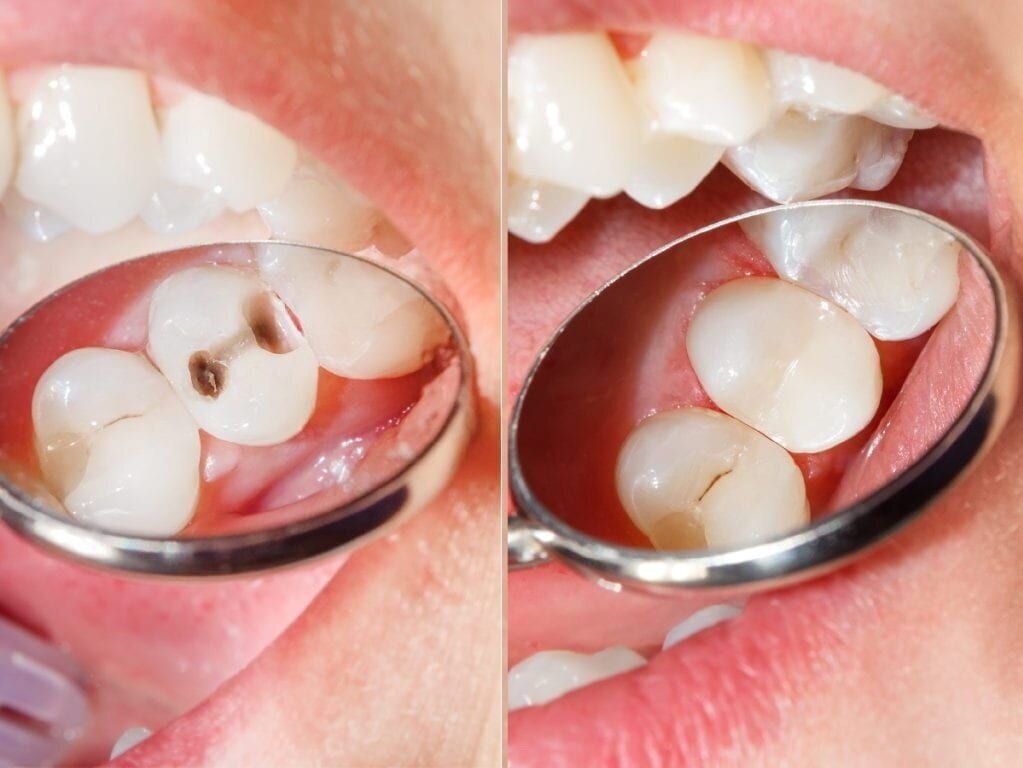Dental Fillings
Dental fillings are a way to save a tooth that has a cavity.
What is a cavity, and how is it treated?
A cavity is a small hole or fracture that allows bacteria to enter your tooth. Without treatment, a cavity can become abscessed or reach the roots and pulp of your tooth and become infected, which requires a root canal. Cavities, often caused by eating and drinking foods and beverages with excessive sugar, are common in children and happen in adulthood. Improper or infrequent brushing and flossing can also cause cavities. Dental fillings start with a thorough assessment of the cavity, which usually includes an x-ray. Following that, your dentist will numb the area surrounding the tooth. When the area is thoroughly numb, your dentist will use a small drill, laser, or other dental instruments to create clean margins around the cavity—removing any decay or bacteria. When the tooth is thoroughly prepared, and the margins are clean, it’s time for your filling.
Dental filling materials include:
Resins
Gold
Porcelain
Silver amalgam
Today, most filling materials match the hue of your surrounding teeth and are virtually invisible.
AMALGAM (SILVER FILLINGS)
Dental amalgam is made from a combination of metals that include mercury, silver, tin, and copper. Sometimes described as “silver-colored” fillings, dental amalgam has been used by dentists for more than 100 years. Critics have been questioning the safe usage of amalgam for many years however major health authorities such as the American Dental Association, U.S. Centers for Disease Control and Prevention, U. S. Food and Drug Administration, and World Health Organization all agree that based on extensive scientific evidence, dental amalgam is a safe and effective cavity-filling material. The Alzheimer’s Association, American Academy of Pediatrics, Autism Society of America and National Multiple Sclerosis Society—all science-based organizations like the ADA—also state that amalgam poses no health risk. Even with the advancements in modern dentistry amalgam or silver may still be indicated in situations where the cavity extends into the gums.
If considering replacing existing silver fillings for more aesthetic alternatives it is very important that it is carried out in a safe fashion.
COMPOSITE RESIN (WHITE FILLINGS)
Patients who have discovered they need a filling are often concerned about the cosmetic consequences involved. Many of these fears find their source in these patient’s only having experience with older forms of dental filling, such as silver amalgam. Composite resins, also known as white fillings, are a newer form of restoration medium that mimics the appearance of natural teeth. They offer a way to restore the full function of patients’ teeth without having a noticeable impact on their overall appearance.
Inlays and Onlays
Inlays and onlays are highest quality of restoration available. They are fabricated in a laboratory by a specialized technician who ensures a perfect fit. These restorations are ideal if the side or top area of a tooth is damaged or decayed. The decayed or broken tooth structure is shaped and an impression is taken. A small filling is made from the model of the impression. The inlay is then fitted into the tooth and cemented or bonded permanently. Onlays are basically large fillings. When a portion of a tooth’s crown is severely decayed or a cusp is fractured, an onlay may be used to restore the tooth.




